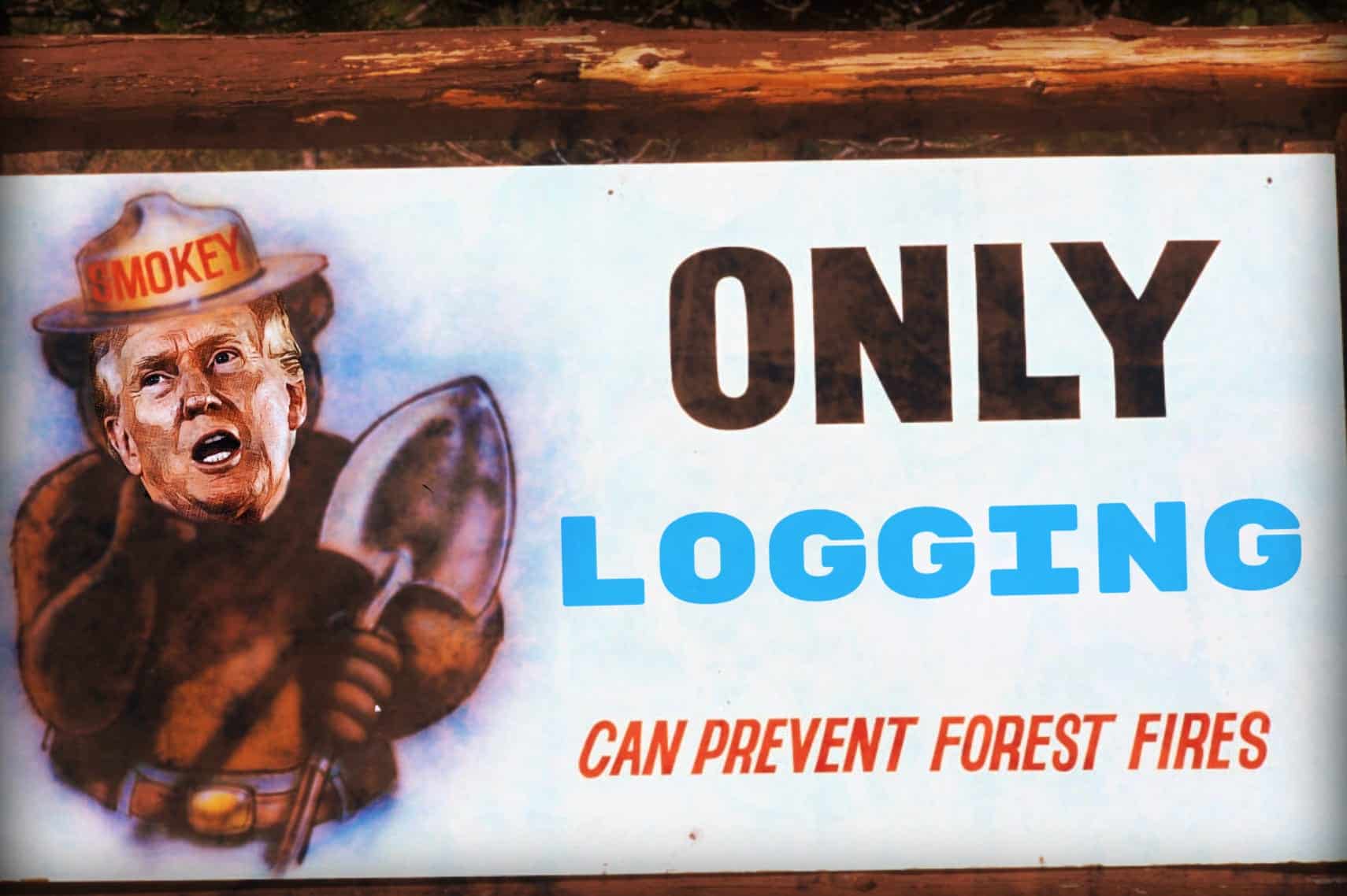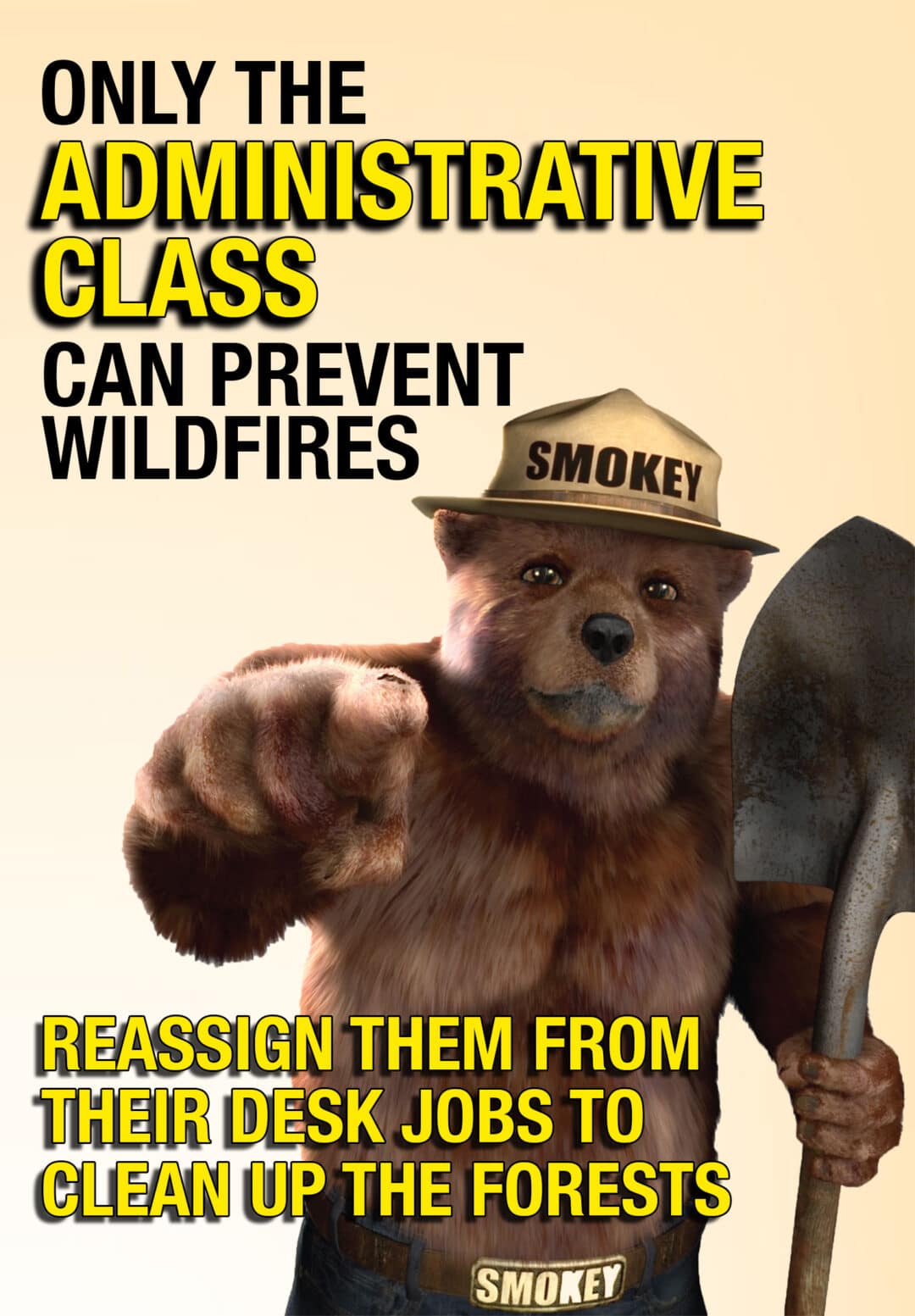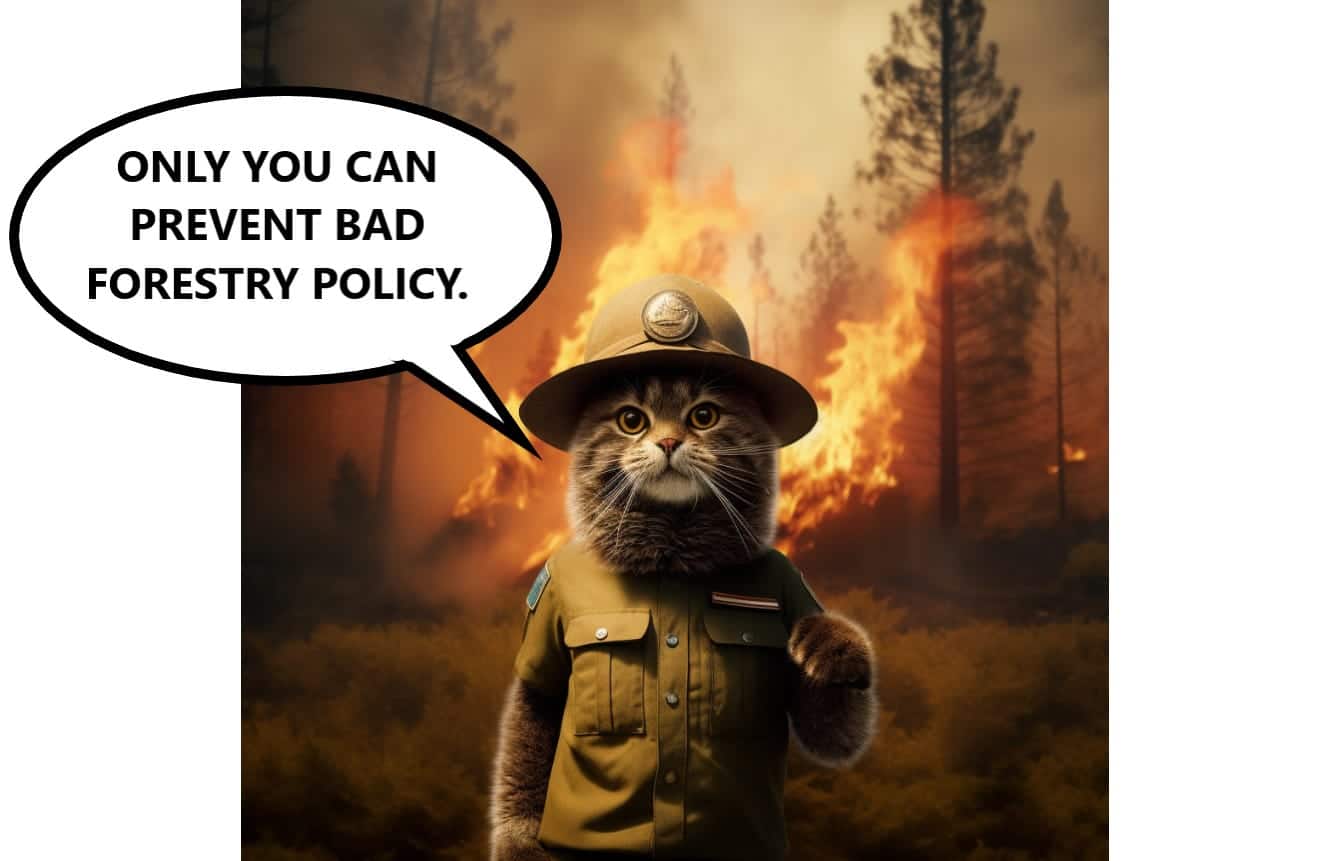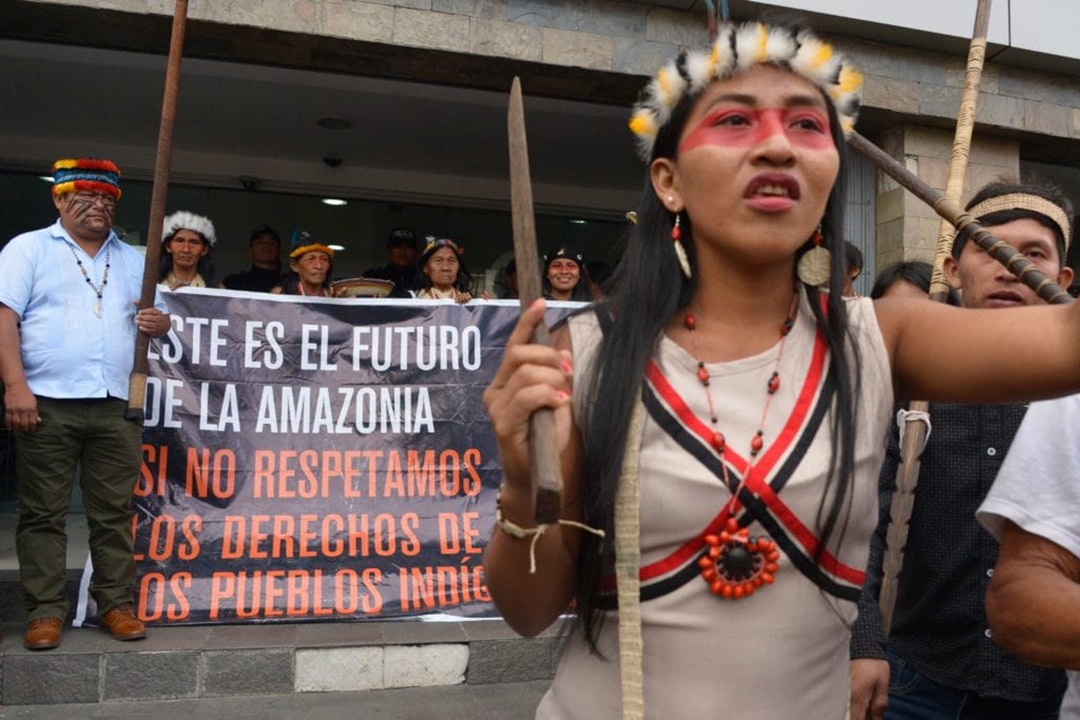

The MAGA plan to stop forest fires: Remove the forest
by Arielle Samuelson | Sep 3, 2024
As the world continues to burn fossil fuels, the climate crisis has pushed wildfires into unnatural “megafires” that consume millions of acres in a single season. This year’s wildfire activity is nearly 3,000 percent higher in California than last year; and within the next three decades, one in seven homes could be at major risk. More concerning is the threat to human lives; last year, the deadliest wildfire in over a century killed 102 people in Maui; and much of the East Coast experienced its worst air quality ever because of Canadian wildfires.
But MAGA Republicans have put together a plan that they say will help ease the wildfire crisis. It’s laid out in Project 2025, a more than 900-page document published by conservative think tank the Heritage Foundation.
In a brief section easily missed, the authors detail an overhaul of the U.S. Forest Service, the federal agency charged with managing wildfires on public lands. Currently, the Forest Service is implementing a 10-year strategy to reduce wildfire risk, which includes science-backed methods like prescribed burns, tree thinning, and pruning.
But under the Project 2025 plan, these wildfire prevention strategies would be heavily stripped down, and primarily focused on one: making it easier for companies to cut down trees and sell them.
Saving the forests by cutting them down
Mitigating climate change is not part of Project 2025’s wildfire plan. That’s no surprise: The author of Project 2025’s wildfire chapter, Heritage policy research fellow Daren Bakst, is a policy advisor for the Heartland Institute, one of the most notorious climate denial think tanks in Washington.
The only wildfire problem Project 2025 purports to solve is the problem of dangerously dense forests. According to the Forest Service, “forests are overstocked, with too many trees growing far too close together. This overgrowth affects forest health and the ability to withstand drought, pests, diseases and wildfire.”
To address this, Bakst writes that the Forest Service “should focus on proactive management of the forests and grasslands that does not depend heavily on burning,” rejecting the Indigenous-backed practice of controlled burns.
The management strategy Bakst focuses on instead is increasing timber sales, which he writes could “play an important role in the effort to change the behavior of wildfire because there would be less biomass.”
To speed up logging, Project 2025 says that the Forest Service needs to “reduce regulatory obstacles…created by the National Environmental Policy Act and the Endangered Species Act.” In other words, environmental and wildlife protection regulations must be weakened, as reviews are slowing down the removal of wood that could otherwise be sold. Project 2025 explicitly rails against protections for the northern spotted owl, a fight that has raged between the timber industry and environmentalists for over 30 years.
Other chapters in Project 2025 propose to repeal President Joe Biden’s logging restrictions in Alaska’s Tongass National Forest, which is the world’s largest temperate rainforest; and to open public lands in Oregon and California “to ensure that timber is ‘sold, cut, and removed’”, in part to ”ameliorate the effects of wildfires.”
While Trump has tried to distance himself from Project 2025, his past actions show alignment with this strategy. In 2018, then-President Trump signed an executive order loosening logging regulations in federal forests in order to prevent wildfires. A few years later, when wildfires forced hundreds of thousands of people on the West Coast to evacuate, he blamed the states for poor forest management. In 2020, Trump opened 9 million acres of the Tongass National Forest to logging and road construction.
Theoretically, cutting down trees to stop wildfires does make some sense. “If you remove the forest, there’s not going to be a forest [to] burn,” said Erica Smithwick, an ecologist and climate scientist at Penn State.
But only focusing on logging is not a responsible wildfire management strategy, seven ecologists and fire management experts told HEATED. In fact, they said, it’s almost certain to make wildfires worse.
“Treating forests just as lumber, and not as ecosystems”
Commercial logging can be part of a good wildfire prevention and management strategy. But the keyword is “part.” According to experts, many other major strategies must be included in any effective wildfire management strategy: including prescribed burns—otherwise known as “planned” wildfires.
Project 2025’s explicit rejection of prescribed burns doesn’t make sense, said Leda Kobziar, professor of wildland fire science at the University of Idaho. “There are hundreds of reasons why fire is beneficial and necessary,” she said. “Indigenous peoples have long been aware of this reality, and lived effectively with wildfire for tens of thousands of years.”
Peer-reviewed research backs this up. A study published last year in the journal Ecological Applications found that the forests most resilient to wildfires used prescribed burns or a combination of burning and thinning, compared to cutting back trees alone.
In fact, it’s the Forest Service’s century of fire-averse attitude and uncontrolled logging that’s caused the dangerously dense forests in the first place, Kobziar argued. Fire is a natural part of the Western ecosystem, and old strategies that put out all forest fires—instead of using controlled fires to burn away brush and small trees—have resulted in the kind of conflagrations that destroy tens of thousands of acres.
Some proponents argue that prescribed burns make the climate crisis worse by adding smoke and particulates to the atmosphere. But multiple scientific studies have shown that logging pollutes more than wildfires. One peer-reviewed study, published in the journal Environmental Research Letters, found that in California, Oregon and Washington, timber harvest emitted five times more carbon than wildfires.
In addition, experts said the trees that make good lumber aren’t the same trees that need to be thinned to prevent fires. “A lot of the trees that actually need to be cut have no economic value whatsoever,” said Matthew Hurteau, a professor of biology at the University of New Mexico.
Hurteau added that many trees that are cut down for fire prevention are too small for sawmills; and wood would have to be hauled over long distances to reach the nearest timber mills. In New Mexico, where Hurteau lives, he estimates that logging one acre of national forest is 12 times more expensive than burning it. “So no one is going to pay the federal government for the right to cut that timber,” he said. “When I read that part of the document, I thought, man, this was really written by somebody who’s choosing to be uninformed.”
And some of the worst fires, like the record-breaking wildfires currently burning in Oregon, can’t be solved by logging because they’re driven by hot, dry winds. No amount of vegetation management, logging or otherwise, will stop those kinds of fires because sparks are unpredictable and can travel long distances. “Those types of wildfires, you have sparks that are blowing so far in front of the fire front that there’s really not a whole heck of a lot that can be done,” said Erica Fleishman, an ecologist and climate scientist at Oregon State University.
Indeed, none of the ecologists that HEATED spoke with for this article thought that cutting down trees alone could solve the wildfire crisis fueled by climate change.
“These are natural disasters outside of the realm of what these forests have ever experienced,” Smithwick said. “Even if we did want to log, we would never be able to log and manage forests at the scale that would be needed.”
And even if you could log and manage the forests at scale, Smithwick noted, why would you?
“These are places that are some of the most beautiful parts of our landscape,” she said. “I don’t want to live in a world that doesn’t have these healthy, beautiful forests we can pass on to our children.”
“If [logging] worked, we wouldn’t be in the mess we’re in.”
The Forest Service, unlike the National Park Service, was not founded with conservation in mind. Nestled under the U.S. Department of Agriculture, its primary purpose since 1905 has been to supply the nation with timber for paper, buildings, fuel, and much more. And according to some experts, the agency has been slow to change.
“There are certainly still folks who think that USDA should primarily be focused on producing an agricultural product, even though we know that if logging is the primary goal of USDA that will exacerbate climate change,” said Aaron Weiss, deputy director of the environmental nonprofit Center for Western Priorities.
“But when you see Project 2025 talk about getting rid of prescribed burns, really what they’re talking about is going back to the old model of treating forests just as lumber and not as ecosystems,” he said.
It’s unclear how much federal forest MAGA Republicans intend to cut down in the name of wildfire prevention. The Heritage Foundation did not respond to HEATED’s inquiries.
But within this sparse section on national forests is a truth that Project 2025 acknowledges directly. Its vision for the future looks exactly like the past, which requires it to ignore decades of science and knowledge about climate change and prescribed burns. The problem is, we already know how outdated fire science ends—we’re living with the consequences.
“It’s a terrible idea,” Hurteau said. “If that idea worked, we wouldn’t be in the mess we’re in.”
Subscribe to HEATED
The Real Solution:





